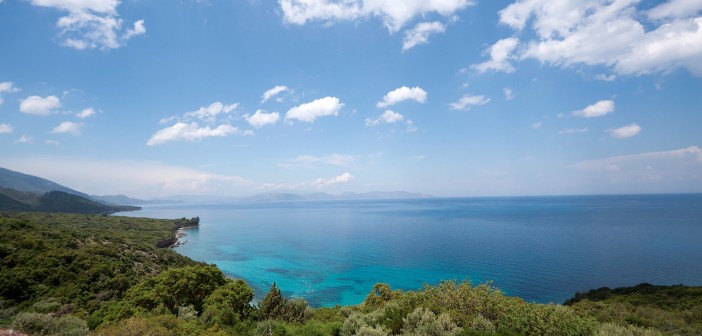Turkey is situated in large Mediterranean geographical location where climatic conditions are quite temperate, diverse nature of the landscape, and the existence in particular of the mountains that run parallel to the coasts, result in significant differences in climatic conditions from one region to the other. While the coastal areas enjoy milder climates, the inland Anatolian plateau experiences extremes of hot summers and cold winters with limited rainfall. Turkey’s diverse regions have different climates because of irregular topography. Taurus Mountains are close to the coast and rain clouds cannot penetrate to the interior part of the country.
Weather and Climate in Turkey
Turkey is well known to be the cultural meeting point between east and west. The weather in Turkey is also a meeting point for a number of distinct climates and weather patterns. The coastal areas along the Mediterranean and the Aegean Seas enjoy Mediterranean climates, characterised by cool, wet winters and hot, dry summers. These coastal regions are popular with tourists during the summer period from the end of May to September. The climate in the Aegean region of Turkey is great throughout the year, even during European winter. The climate in Turkey along the eastern part of the country is best enjoyed in late spring (from April to May) or early autumn (September to early October). Turkey’s climate and weather along the coast of the Black Sea is a continental climate. The fours seasons are very distinct and in summer the cities and towns bordering the Black Sea are inundated with tourists and holidaymakers eager to enjoy the summer weather. The climate of the Anatolian Plateau is a steppe climate (there is a great temperature difference between day and night). Rainfall is low and there is more snow.
In Western Anatolia, there is a mild Mediterranean climate with average temperatures of 9 °C in winter and 29 °C in summer. On the southern coast of Anatolia the similar climatic condition are observed.
The climate of the Anatolian Plateau is a steppe climate.
There is a great temperature difference between day and night. Rainfall is low but it usually in form of snow. The average temperature is 23 °C in summer and -2 °C in winter.
The climate in the Black Sea area is wet, and humid (summer 23 °C, winter 7 °C). In the Eastern Anatolia region there is a long winter, and snow remains on the ground from November until the end of April (the average temperature in winter is -13 °C and in summer 17 °C). In the South-Eastern Anatolia region, summers are hot and dry, with temperatures above 30 °C. Spring and autumn are generally mild, but during both seasons sudden hot and cold spells frequently occur in the region.
Seasons:
Summer in Turkey
Summer is the highest season for visiting Turkey to experience warm summer temperatures, swimming, sun bathing, seaside restaurants, summer garden terraces and rich nightlife. Summer season in Turkey (June, July, August) is quite hot in five of Turkey’s seven distinct climatic regions, though usually rainless, and cool inland in the evenings. The Aegean and Mediterranean coasts have cool, rainy winters and hot, moderately dry summers.
Winter in Turkey
Winter season is one of the best times to visit Turkey, to experience authentic local life, skiing and other winter sports. Winter season in Turkey (December, January, February) can be chill, rainy and snowy, with occasional cold but sunny days, everywhere except the southeast, which remains temperate, but lower prices and fewer tourists are compensations. Turkey receives most of the rainfall in the winter season.
Spring in Turkey
Spring season is very well for visiting Turkey to experience beautiful nature, local life, mild temperatures and smaller crowds. Spring in Turkey (March, April, May) is prime because the weather is moderate throughout the country and the days are long. Average daytime temperatures
Autumn in Turkey
Autumn season (September, October, November) is very good for visiting Turkey with mostly mild weather to experience discovering historical sites, comfortable temperatures, local life and unique nature. The days are shorter, and rain may begin again in October in Turkey.
Topographic Regions of Turkey
About 3 percent of the territory in Turkey belongs to the European region known as Thrace. This region shares borders with Greece and Bulgaria. It is separated from the Asian portion of Turkey by a series of waterways that connect the Black Sea with the Aegean Sea. The rest of the country is located in Asia, mostly on the peninsula of Asia Minor, which is the westernmost extension of the continent. This region is also called Anatolia, or simply Asiatic Turkey.
Turkey’s terrain is structurally complex and divides into five regions: the Black Sea region in the north; the Sea of Marmara region in the northwest; the Aegean Sea region in the far west; the Mediterranean Sea region in the south; and the Anatolian Plateau region in the country’s center. All of the regions share a generally mountainous terrain, and many large lakes and rivers appear throughout the Turkey.
Coastline of Turkey
Beaches in Turkey
Tourism in Turkey
Winter Sports Tourism Centers Of Turkey




